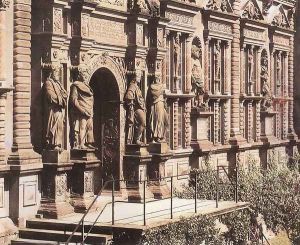Alexander Colyn Paintings
Alexander Colyn, also known as Alexander Colin, was a notable sculptor of the Renaissance period, born in Mechelen, now in Belgium, around 1527 or 1529. His exact birth date remains uncertain, but his contributions to the art world, particularly in the realm of sculpture, have made a lasting impact that transcends the need for precise birth details. Colyn's life and career were marked by his remarkable skills in sculpting, which he honed and developed throughout his lifetime, leading to significant recognition and demand for his work across Europe.
Colyn's career took a pivotal turn when he moved to Innsbruck, Austria, where he became one of the leading sculptors at the court of Ferdinand I. This position not only offered him prestigious commissions but also allowed him to influence the artistic direction within the court and the broader region. His works during this period encapsulated the essence of the Renaissance, blending classical ideals with the emerging currents of Mannerism, showcasing his adaptability and mastery over different styles and forms.
Among Colyn's most celebrated works is the cenotaph of Emperor Maximilian I in the Hofkirche, Innsbruck. This monumental project not only showcased his skill as a sculptor but also his ability to manage and execute large-scale commissions that required intricate detailing and a deep understanding of thematic and symbolic representation. The cenotaph, adorned with reliefs and statues, stands as a testament to Colyn's artistic vision and his capacity to convey power and emotion through stone.
Alexander Colyn's contributions to the world of sculpture during the Renaissance period were significant, with his works reflecting the humanist ideals of the time, characterized by a focus on human potential and achievements. His ability to infuse life-like qualities into his sculptures, combined with his mastery of form and detail, has ensured his place among the notable artists of his era. Colyn's death in 1612 marked the end of a prolific career, but his legacy continues to be celebrated for its artistic excellence and historical significance. Through his sculptures, Alexander Colyn has left an indelible mark on the fabric of Renaissance art, embodying the spirit of innovation and the pursuit of beauty that defined the period.
